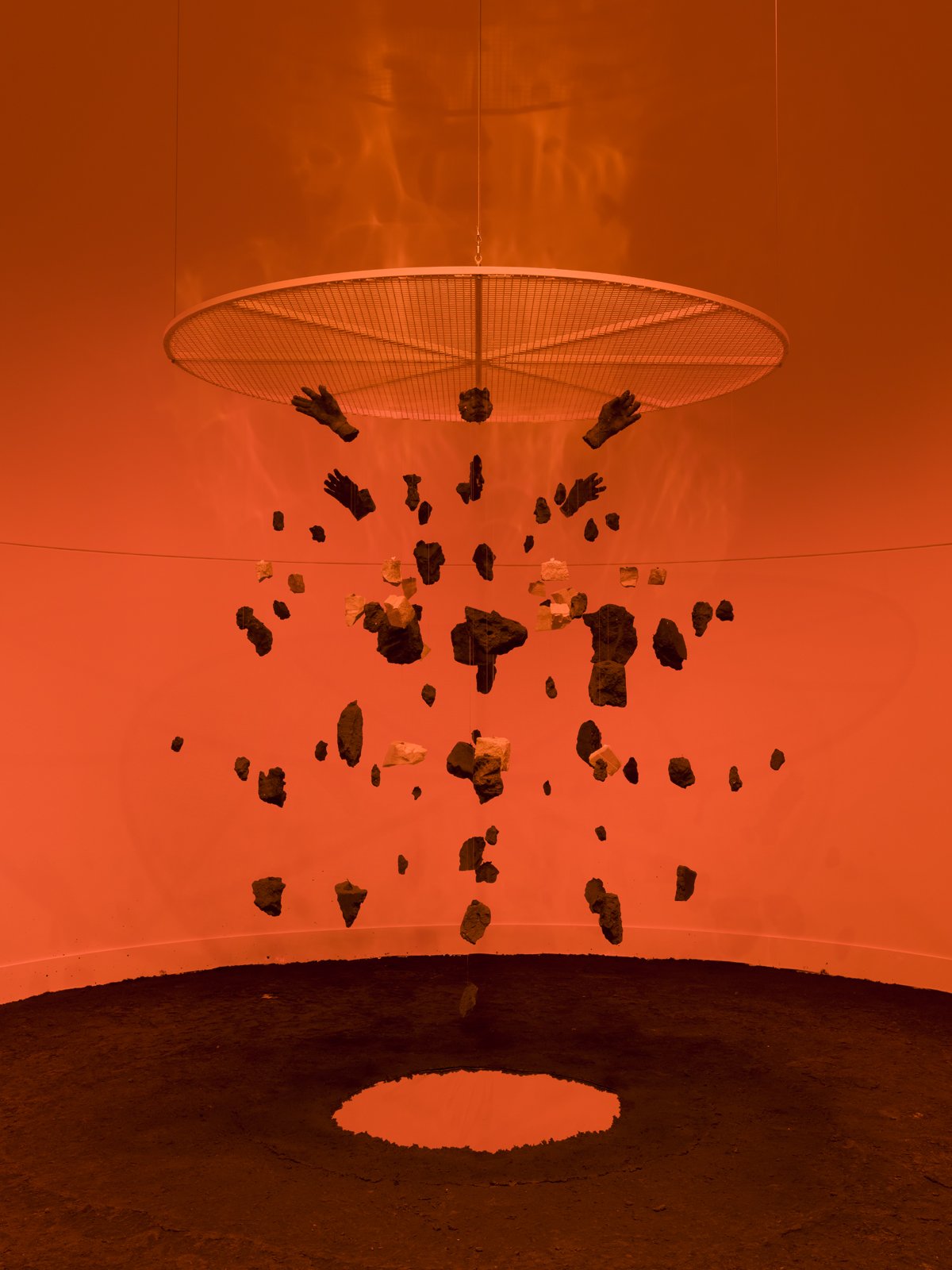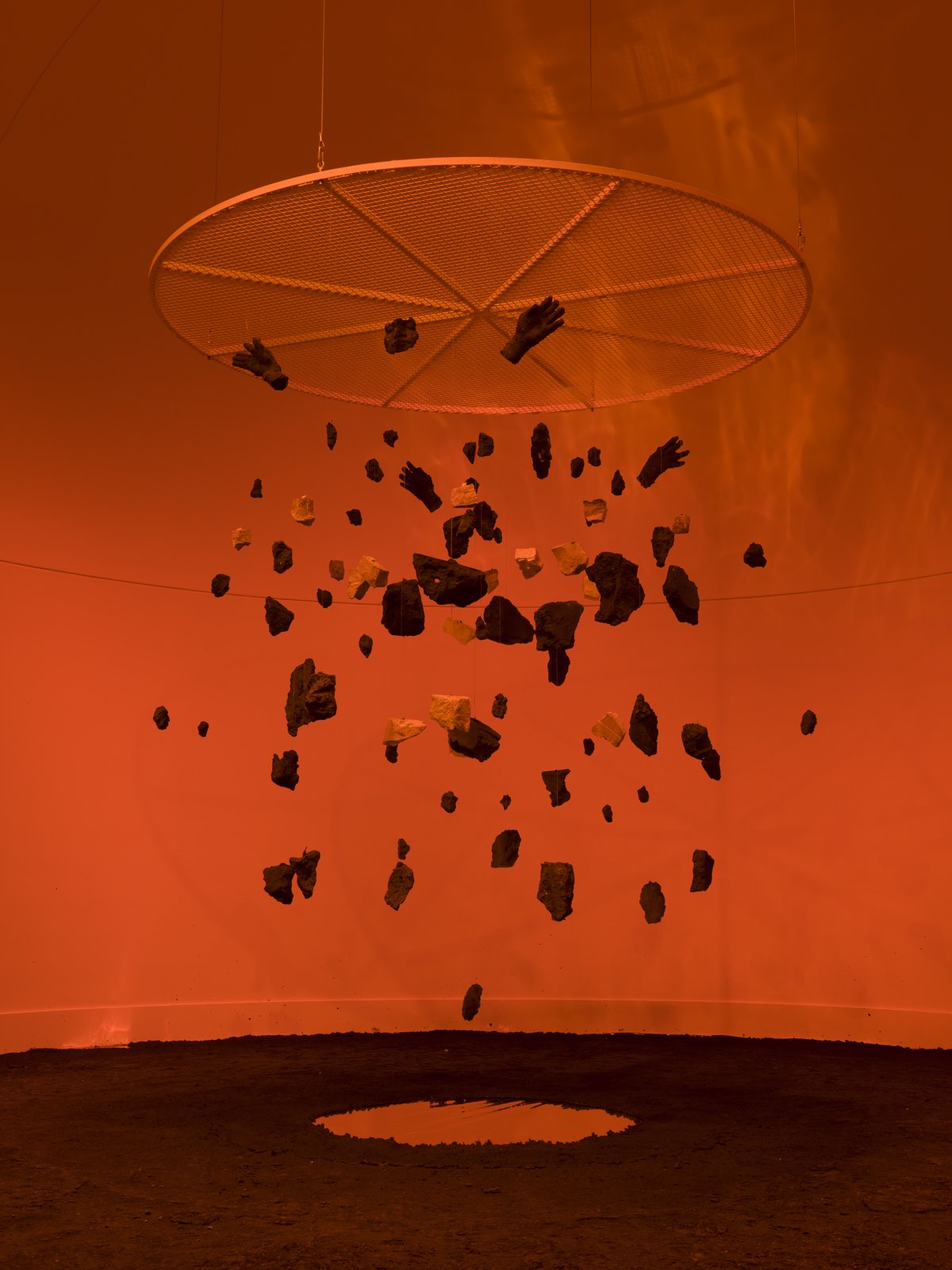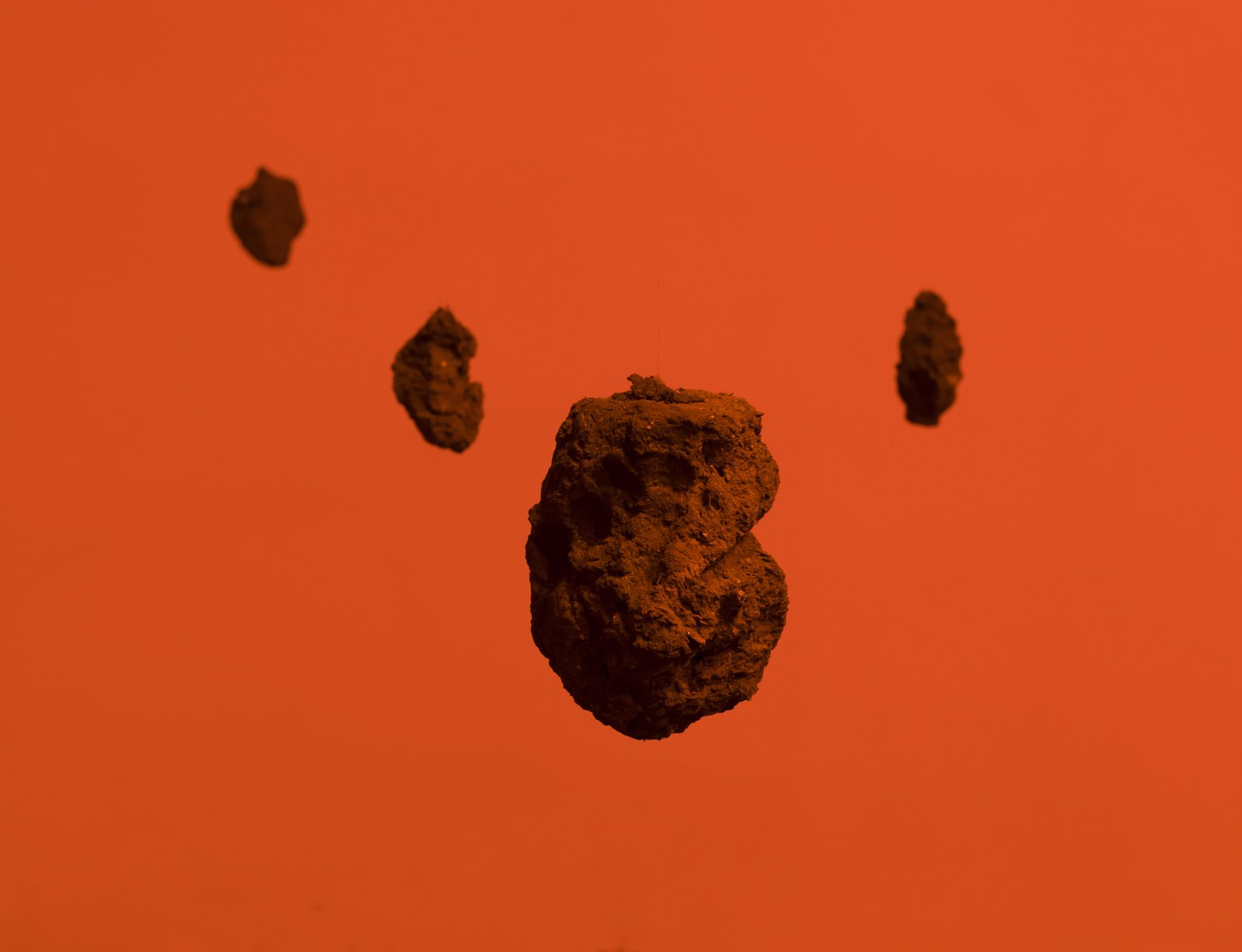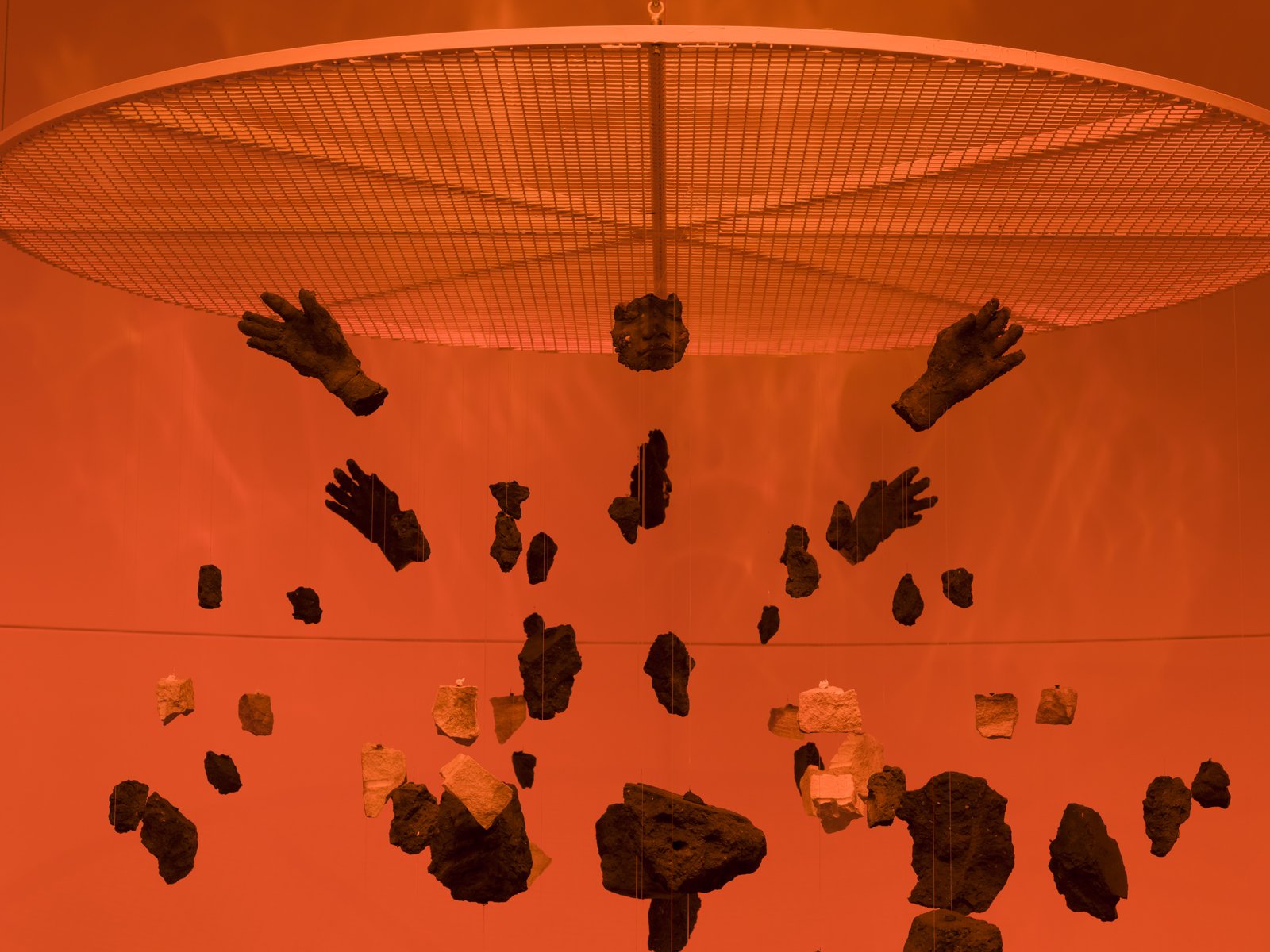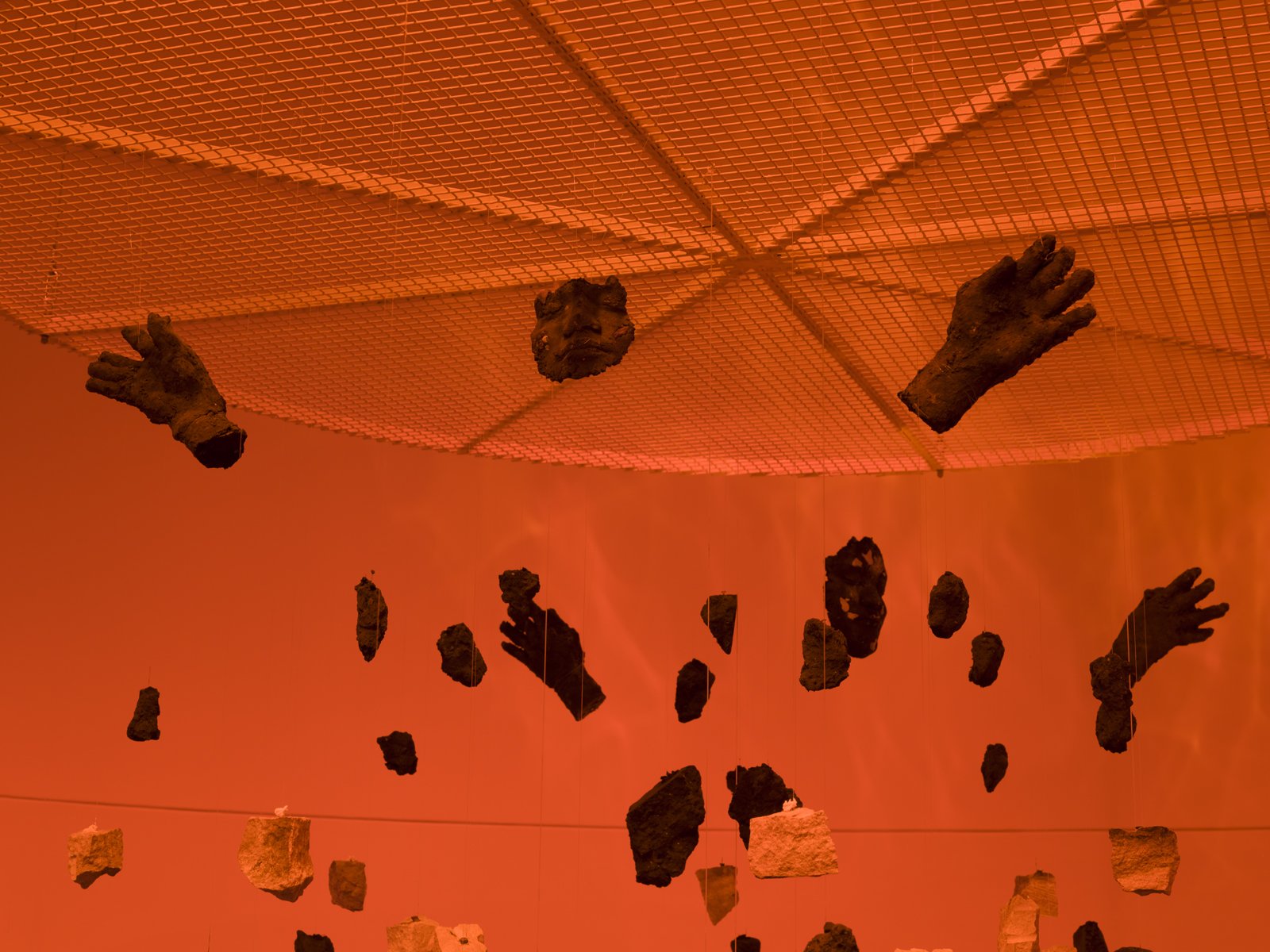Between Starshine and Clay, 2022
earth, sandstone, wire, hardware
120 x 96 x 96 inches
The Hammer Museum, Los Angeles, CA
*Press Release below
Between Starshine and Clay (2022) marks the first solo museum exhibition for artist Kiyan Williams (b. 1991, Newark, New Jersey) and is an installation that takes its name from an phrase in writer and educator Lucille Clifton’s 1993 poem "won’t you celebrate with me." Williams, who collects earth from familial sites and spaces that hold Black American histories, creates sculptural forms that slowly reveal traces and gestures of the body. Using dirt, sandstone, and other debris such as bricks to form faces, limbs, and hands, Williams meditates on the notion of the “ruined” body and its potential to transcend and generate new genealogies.
A sculpture, Between Starshine and Clay, hangs in the center of the room, made up of fragments of hardened earth and sandstone suspended from a metal grille. Like partially assembled fragments in an archaeological site, the pieces of the sculpture have been stilled in ostensible movement, an arrangement that suggests a once-cohesive entity torn apart, now in a process of transformation. Traces of a human body, like a face and hands, make up visible parts of the debris, yet Williams refuses the impulse to produce a fully legible figure. The work hovers somewhere between abstraction and representation, denying the viewer the occasion to examine, evaluate and consume the likeness of their body, while also dismissing the idea that total abstraction is inherently neutral. Indeed, although the sculpture has been entirely cast from the artist’s physical form, the work has been broken apart in order to obstruct figuration—a gesture of refusal that renders the body unavailable to such scrutiny, while doubly refuting the either-or binary that is commonly perceived to exist between abstraction and figurative representation.
Between Starshine and Clay thus points to the notion of the “ruined” body, and disrupts that notion through an emphasis on material traces of history, and to archaeological ruins, positioning them here not as sites of disintegration and essential pastness, but as agents of regeneration. The artist takes an ambivalent position between destruction and renewal, such that the work expresses neither one nor the other, but a constant entanglement of both. The use of soil, a consistent material throughout Williams’ practice, is a further acknowledgement of the collective meaning such matter contains with regard to Black histories—geographically, metaphorically, and otherwise. Beneath the constellation of fragments, the floor is covered in a bed of earth that surrounds a rounded mirror installed just below the hanging sculpture, like the glassy surface of a still pool of water. The room is suffused with a red-orange glow, a cosmic ambience that transports the viewer as though to another realm. Williams’ use of ephemeral light and dense earth evokes geological and cosmological processes of violent destruction and creation, such as volcanic eruptions or the explosion of a star, that serve as allegories for forging new ways of being in the world.
